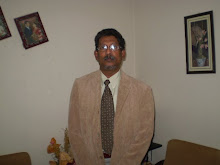Saturday, December 24, 2011
The Four Fold Ultimate Realities (Catuda Paramattha)
According to the AbhiDhamma philosophy expounded by the Buddha, there are four Ultimate Realities. They are: Citta (Mind), Cettasika (Mental Properties),Rupa (Matter), Nibbana (Enlightenment)
The first three are Mundane Realities and the Supramundane “Nibbana” is the absolute reality free from all conditions.
Mind or Citta is that which is aware of an object only. Mental Properties or Cetasika which is 52 in number, one of which is Vedana (Feeling) and another is Sanna (Perception). The remaining fifty (50) are collectively called Volitional Activities, known as Kamma. Therefore, the receptacle of combination of Mind and Mental Properties (i.e. Volitional Activities) is Vinnana (Consciousness).
No Consciousness can arise when a person is unconscious due to some cause , or when that person is under medical anesthesia or in a coma, or when that person is in deep sleep. But the Mind remains dormant or inactive for the period of time in these conditions known in Pali as “Bhavanga Citta” (factor of life). Actually we experience Bhavanga state of mind more than any other type of consciousness throughout our life time.
According to AbhiDhamma, the Bhavanga state of mind or Consciousness flows at an ultra high frequency rate of more than a trillion Thought-Processes in one second (i.e. approximate time of a flash of a lightning) and seventeen (17) Thought-Moments constitute one Thought–Process. When an object is presented to the mind through one of the five sense-doors, the dormant Bhavanga state of mind is arrested and a thought-process appropriate to the object perceived arises and flows on.
Immediately after the cessation-instant of a thought-moment, there results the genesis-instant of the subsequent thought-moment. Thus each unit of consciousness perishes conditioning another, transmitting at the same time all its potentialities to its successor. There is, therefore, a continuous flow of Bhavanga Consciousness like a stream without any interruption.
The co-existence of Mind and Matter is Life. Disharmony or lack of co-ordination of mind and Matter is Decay; Separation of Mind and Matter is Death; Re-combination and coexistence of new Mind and Matter is Rebirth.
The Buddha’s doctrine of Rebirth after death is not a mere theory but a fact. Rebirth takes place without any intermediate state at the precise moment of death. When the present physical body, no longer capable of sustaining life dies , the individuals latent cumulative Kamma as volitional energies do not die with it but continue to take another new mental and physical form depending upon one’s good or evil past Kamma along with its potentialities in a new existence.
According to AbhiDhamma, the type of consciousness that arises initially at the precise moment of conception is termed "Patisandhi-Citta". After the Patisandhi-Citta –the dormant mental state of Mind or Consciousness known as Bhavanga Citta arises and flows on during one’s life time. The Bhavanga meaning factor of life flows on in life until the moment of death.
Then, at the end of this Bhavanga state of mind “Cuti-Citta” or the decease-consciousness arises only once in a life time disconnecting the present life and from that very moment onwards, another new existence with new body and mind begins in the new life.
This is the never ending cycle of death and rebirth, the natural process of all ordinary human-beings, known as “Samsara”
The Theravada orthodoxy thus maintains that the AbhiDhamma Pitaka is authentic words of the Buddha and the Theravada school, however, holds that the Blessed One himself expounded the books of the Abhidhamma, except for the detailed reputation of deviant in the Kathavathttthu which was the work of the Ven. Maha Moggaliputta Tissa during the reign of Emperor Asoka.
The Pali Commentries apparently drawing upon an old oral tradition, maintain that the Buddha expounded the Abhidhamma, not in the human world to his human disciples, but to the devas or gods in the Tavatimsa Heaven.
According to this tradition, just prior to his seventh rains retreat, the Blessed One ascended to the Tavatimsa Heaven and, there, seated on the Pandukambala Stone at the foot of the Paricchaattaka tree, for the three months of the rain he taught Abhidhamma to devas who had assembled from the ten thousand world systems, He made the chief recipient of the teaching His mother, Maha Maya Devi, who had been reborn as a deva.
The reason the Buddha taught Abhidamma in the dava world rather than in the human realm, it is said, is because in order to give a complete and continuous disclosure of the Abhidhamma, it has to be expounded from the begining to the end to the same audience in a single session.
Since the full exposition of Abhidhamma requires three months, only devas and brahmas could receive it with unbroken continuity as they alone are capable of remaining in one posture for such a length of time.
However, to sustain his body, the Buddha descended to the human world to go on alms around in the north region of Uturukuru. After colleting almsfood, the Buddha went to the Anotatta Lake to partake his meal. The Ven. Maha Sariputta, the General of Dhamma would meet the Buddha there and receive a synopsis of the teaching given that day in the deva world.
Having learnt the Dhamma taught by the Blessed One, Ven.Sariputta in turn taught it to his own cycle of 500 pupils and thus the textural recession of the Abhidhamma was established.
Accordingly, Ven. Sariputta is regarded as the literal author of the Abhidhamma treatises
Adapted from Abhidhamma and Buddhism in a Nutsell by U BaThein (BT Bros) President of the ChanMyay Yekitha Solidality, Yangon, Union of Myanmar and from a Comprehensive Manual of Abhidhamma, The Abhidhammanttha Sangaha of Achariya Anuruddha, Buddhist Publication Society, Kandy, Sri Lanka


